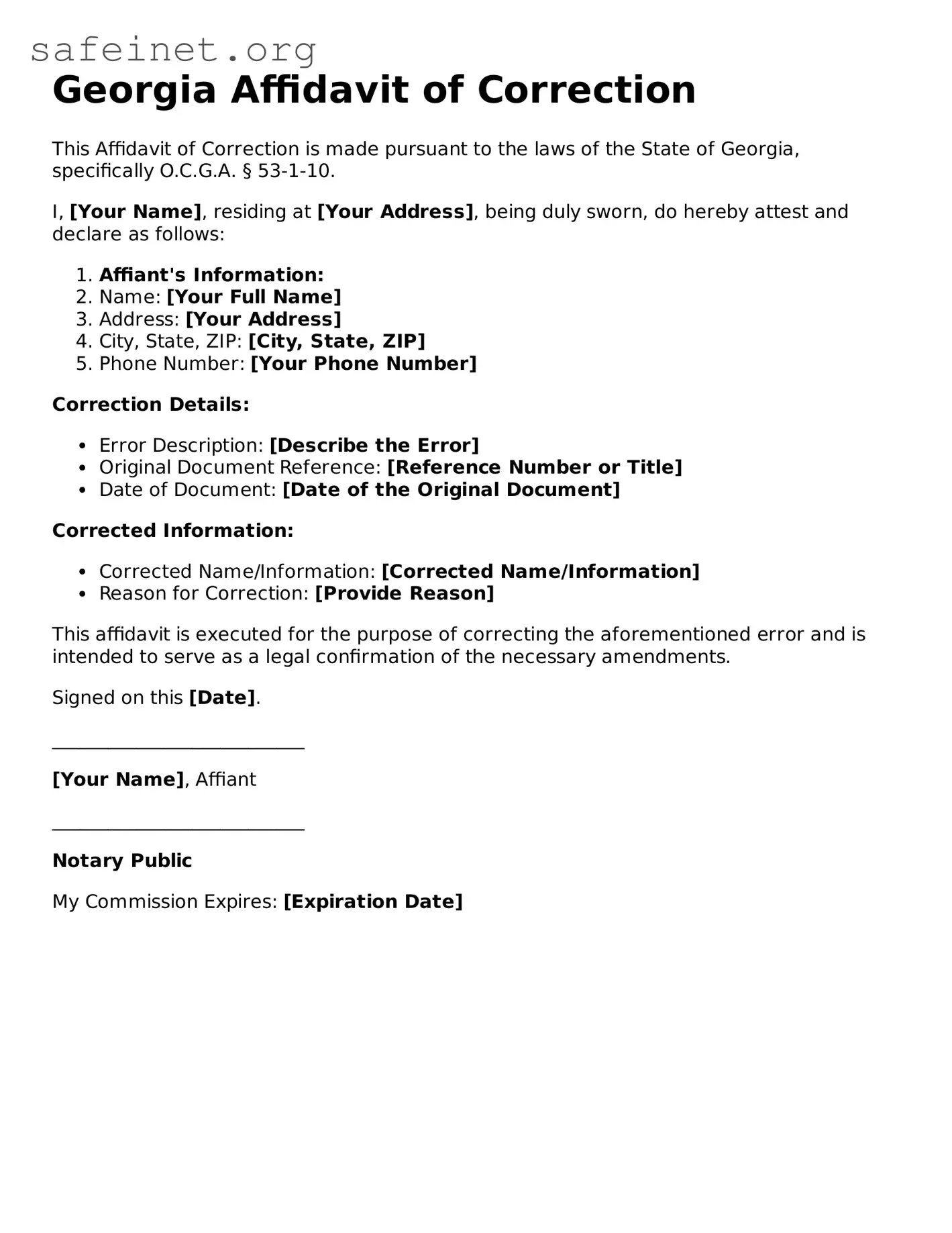The Georgia Affidavit of Correction form bears resemblance to the Affidavit of Correction used in various other states. Like its Georgia counterpart, this document allows individuals to rectify minor errors in legal documents such as real estate deeds or titles. This is typically used for misspelled names or incorrect property descriptions. The process usually requires the same fundamental procedure: a sworn statement attesting to the error and the intent to correct it, enhancing clarity and ensuring accurate records in public files.
Another similar document is the Certificate of Correction, commonly utilized in corporate filings. Corporations are often required to file specific documents with state entities. If an error is discovered in these filings, a Certificate of Correction allows the corporation to amend the official records. Just as with an Affidavit of Correction, this document provides the necessary details about the error and the correct information, thereby maintaining the integrity of corporate records.
The Declaration of Correction also functions similarly, particularly in the context of patents and trademarks. When an error in patent claims or trademark registrations occurs, a Declaration of Correction can formally announce the mistake and present the accurate information. Both documents aim to correct public records, ensuring that the proper legal representations are maintained, which is essential for protecting intellectual property rights.
The Correction Deed serves a similar purpose in real estate affairs. When there is an error in a previously recorded deed, a Correction Deed allows the parties involved to clarify the intentions and correct misconceptions. Just like the Georgia Affidavit of Correction, this document must be executed correctly to be valid legally, preserving the chain of title and the accuracy of ownership records.
A Promissory Note Amendment is another pertinent document. When borrowers and lenders recognize inaccuracies in an existing promissory note, an amendment can clarify the agreement's terms. This is akin to how an Affidavit of Correction is used to fix errors. Both documents ensure transparency and prevent future disputes by formally acknowledging corrections to critical financial agreements.
The Statement of Correction is another document that functions in a similar vein. Often used in administrative contexts, it allows parties to correct errors in official filings or applications. This document ensures that the correct information is reflected in public records, much like the Affidavit of Correction in its mission to uphold accuracy in documentation.
Lastly, the Erratum is a document used primarily in publications to correct typographical or factual errors. While it may not seem directly related to legal documents, it serves the same overarching purpose—ensuring that the information is accurate and trustworthy. Just as the Affidavit of Correction addresses minor mistakes in legal records, the Erratum ensures that publicly disseminated information remains reliable and credible.
